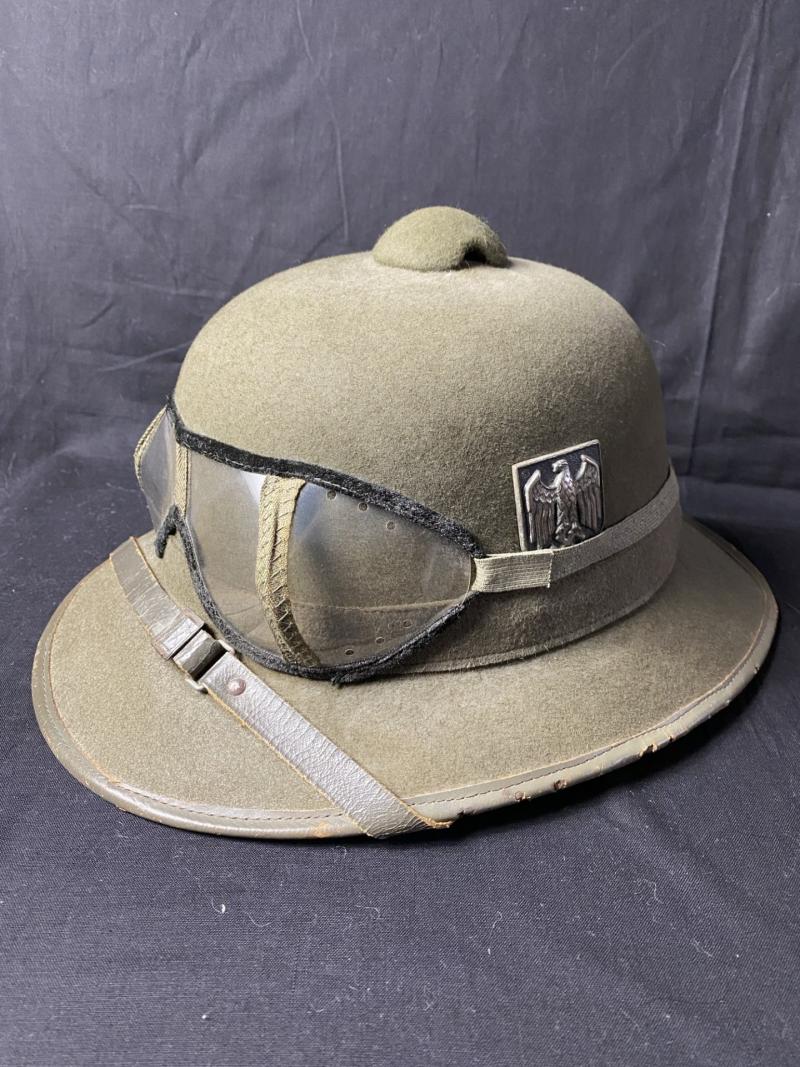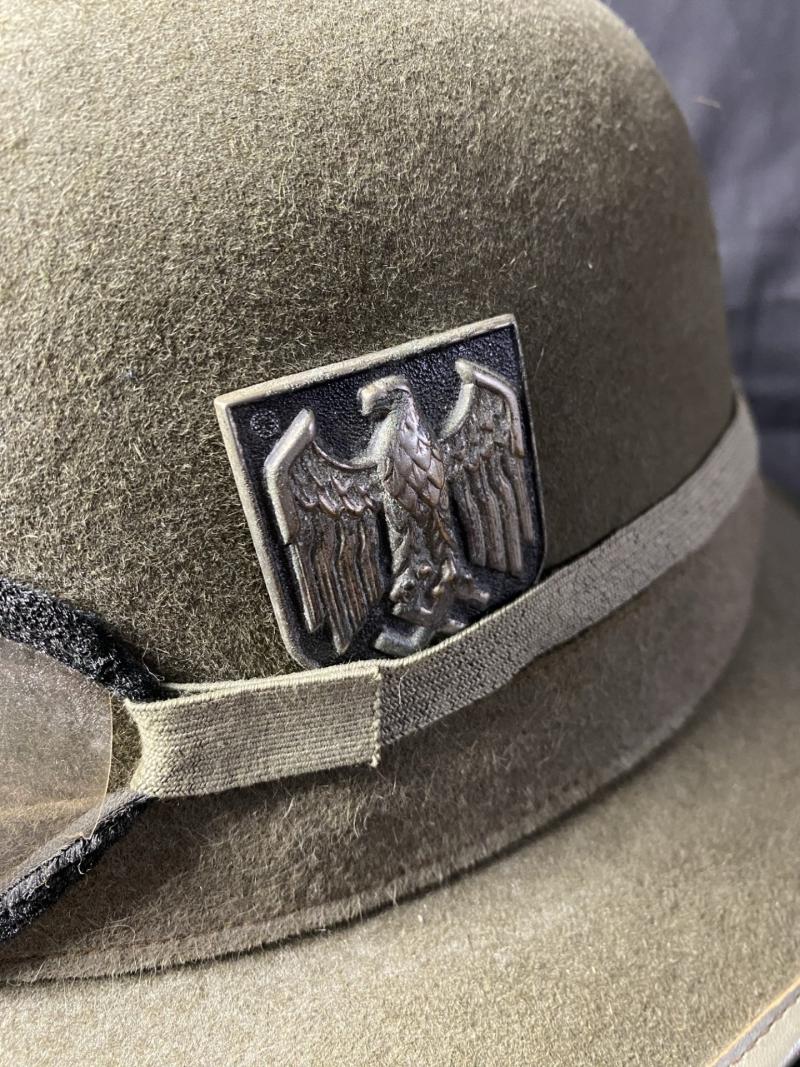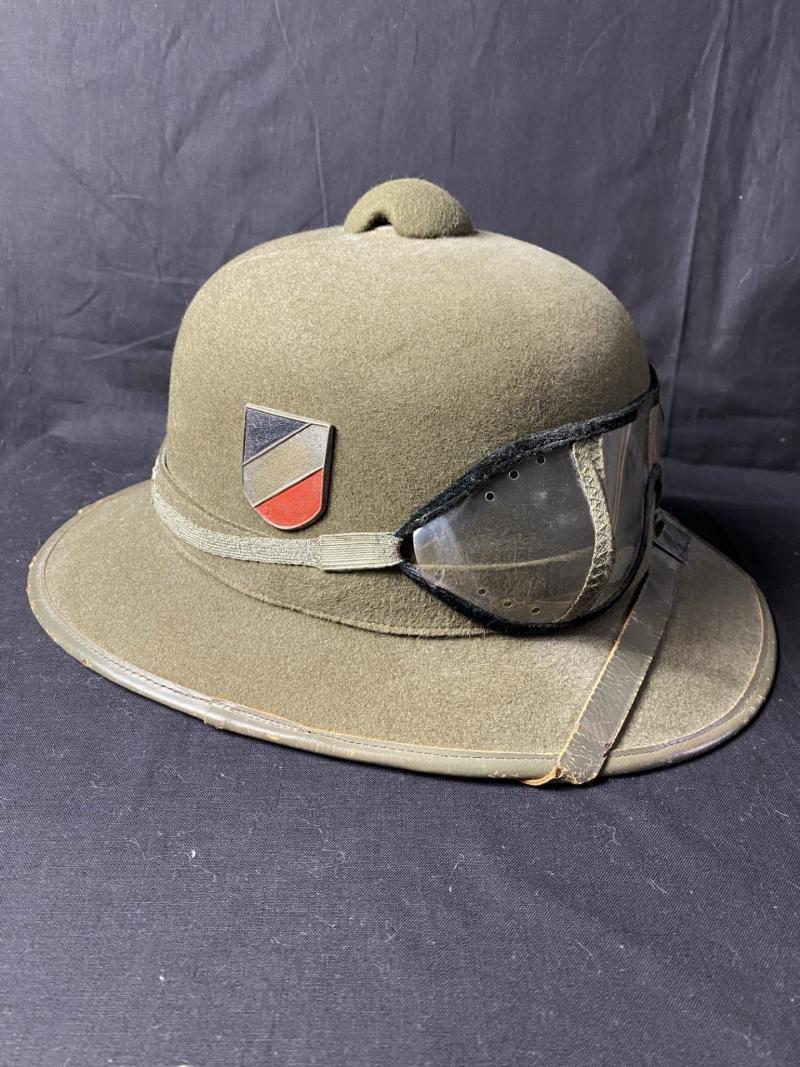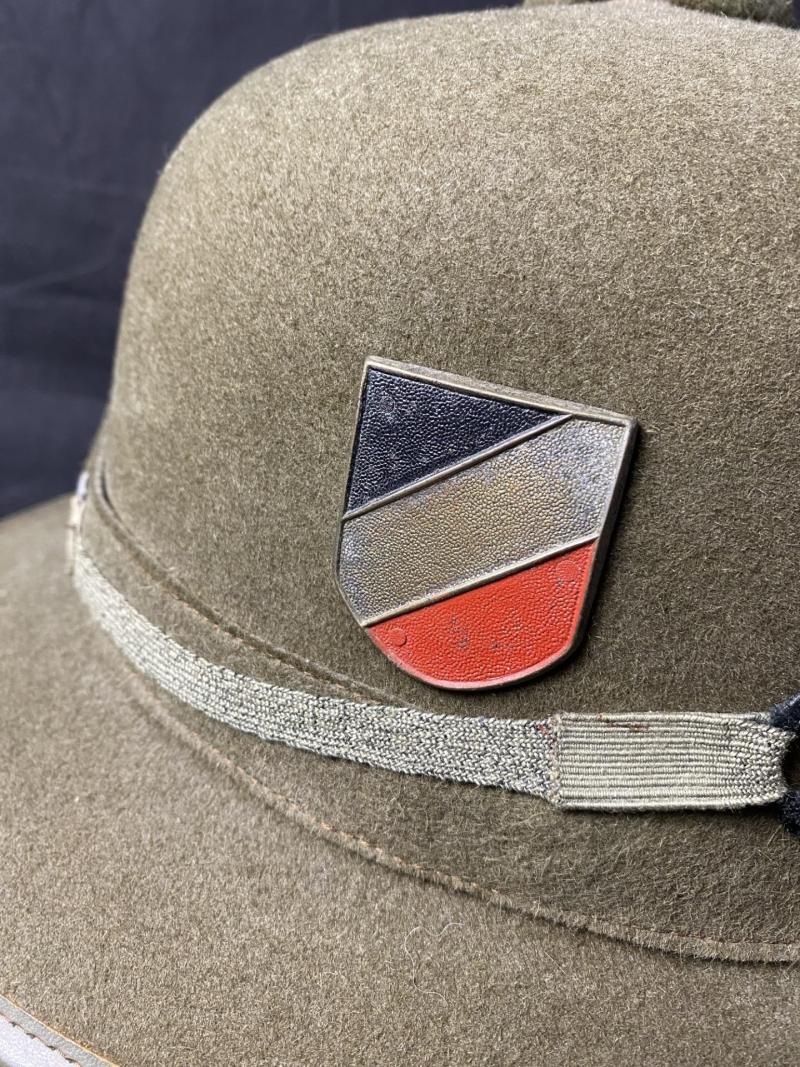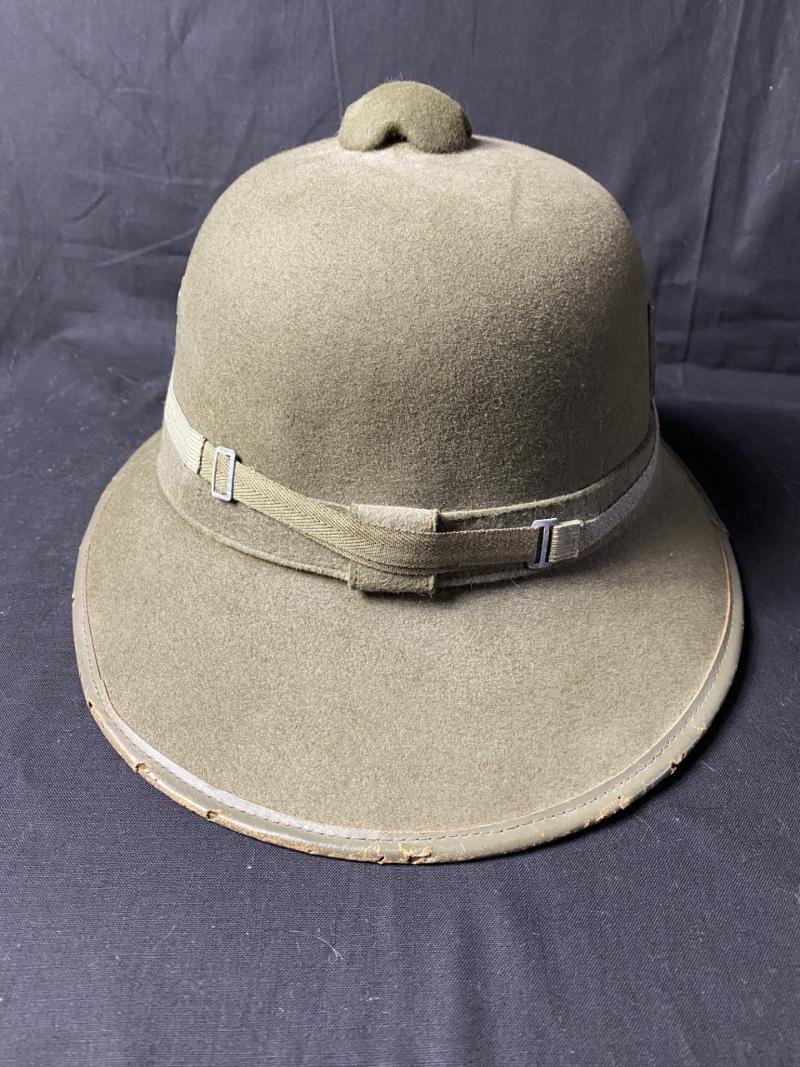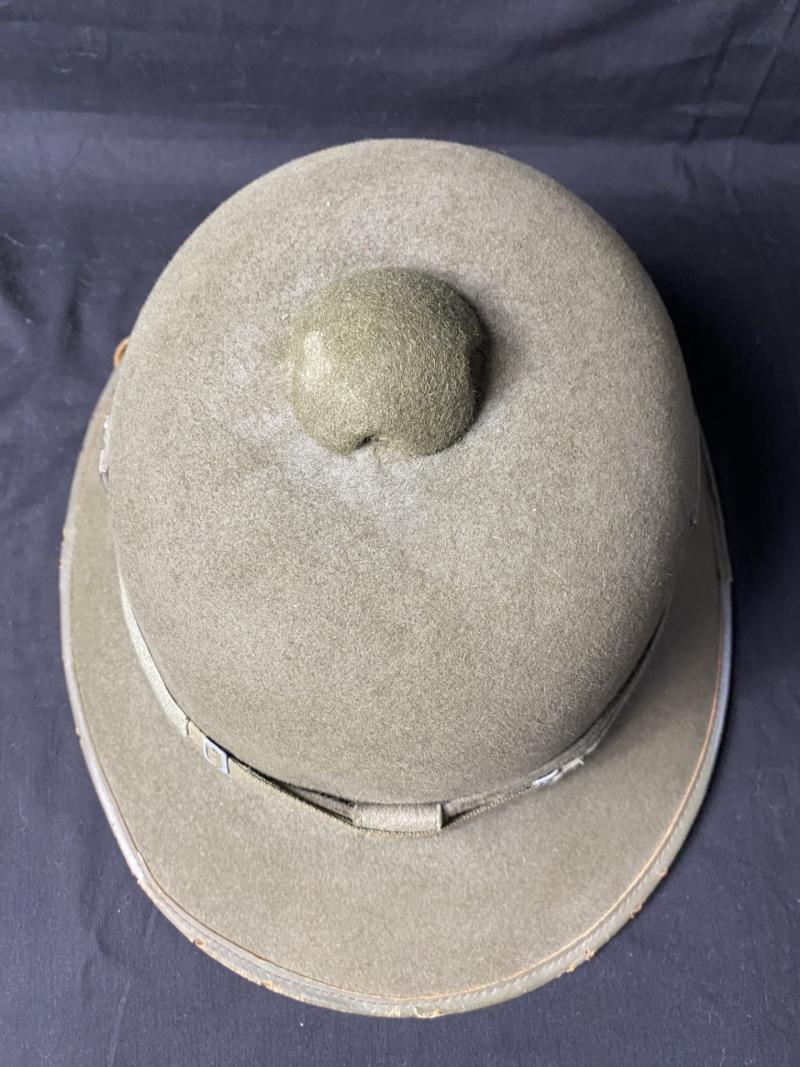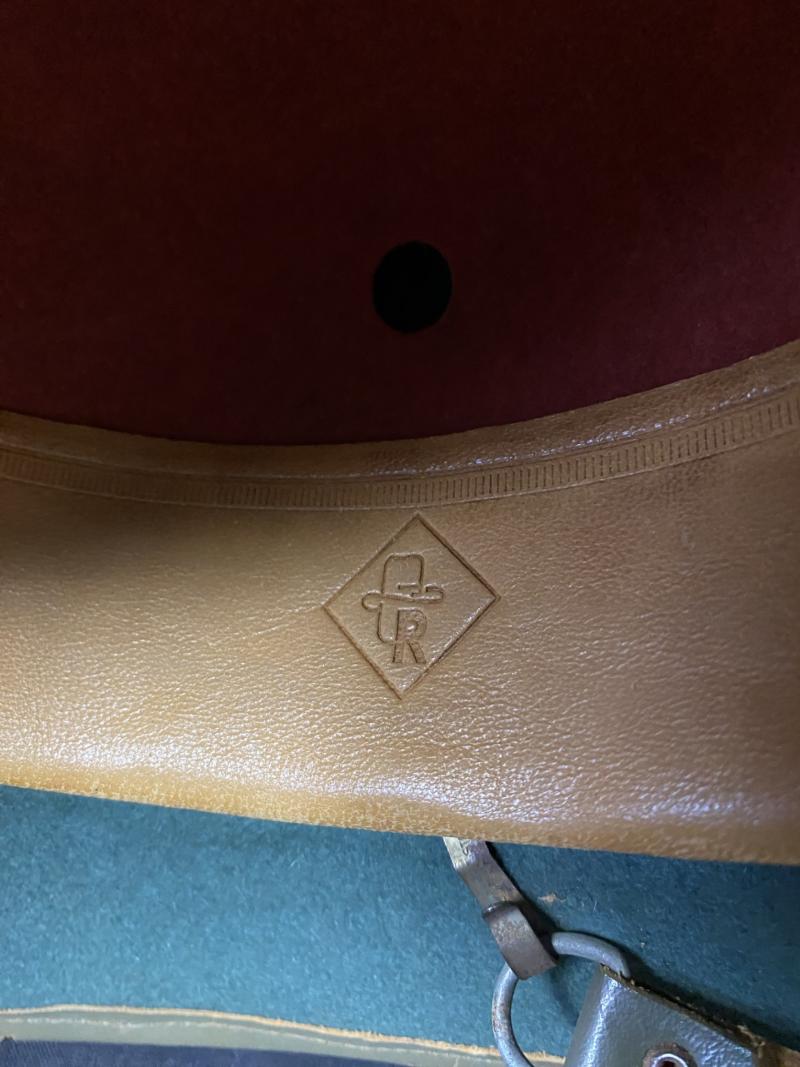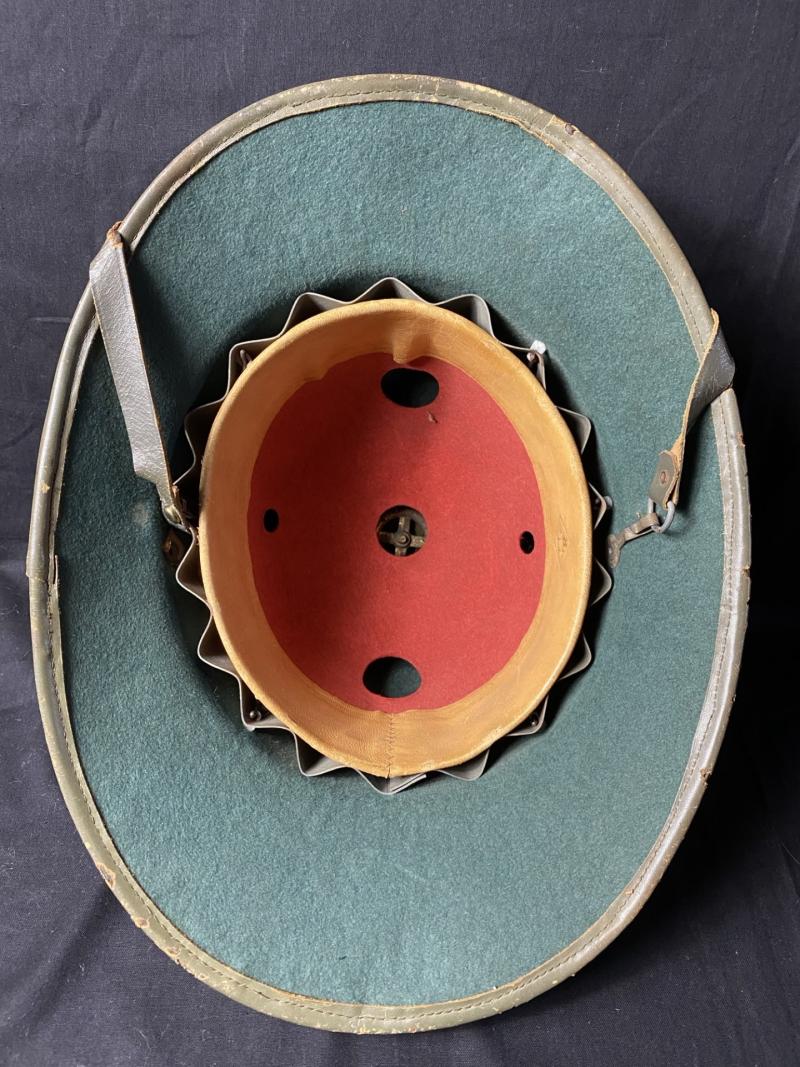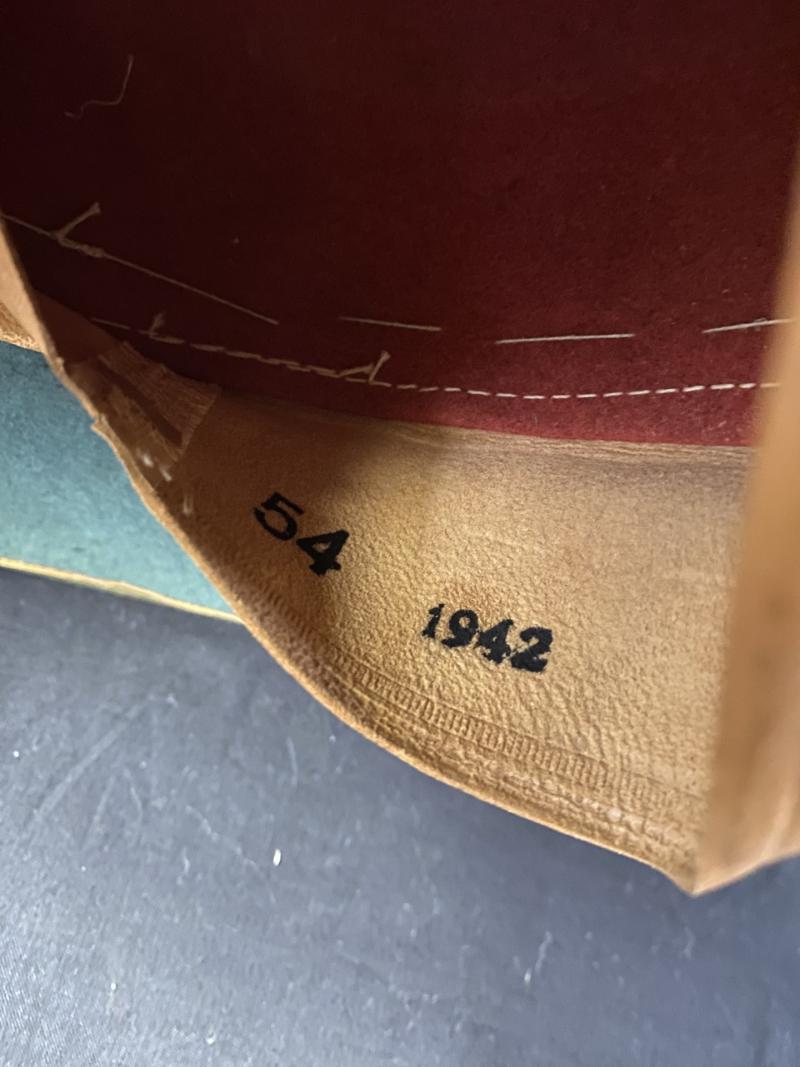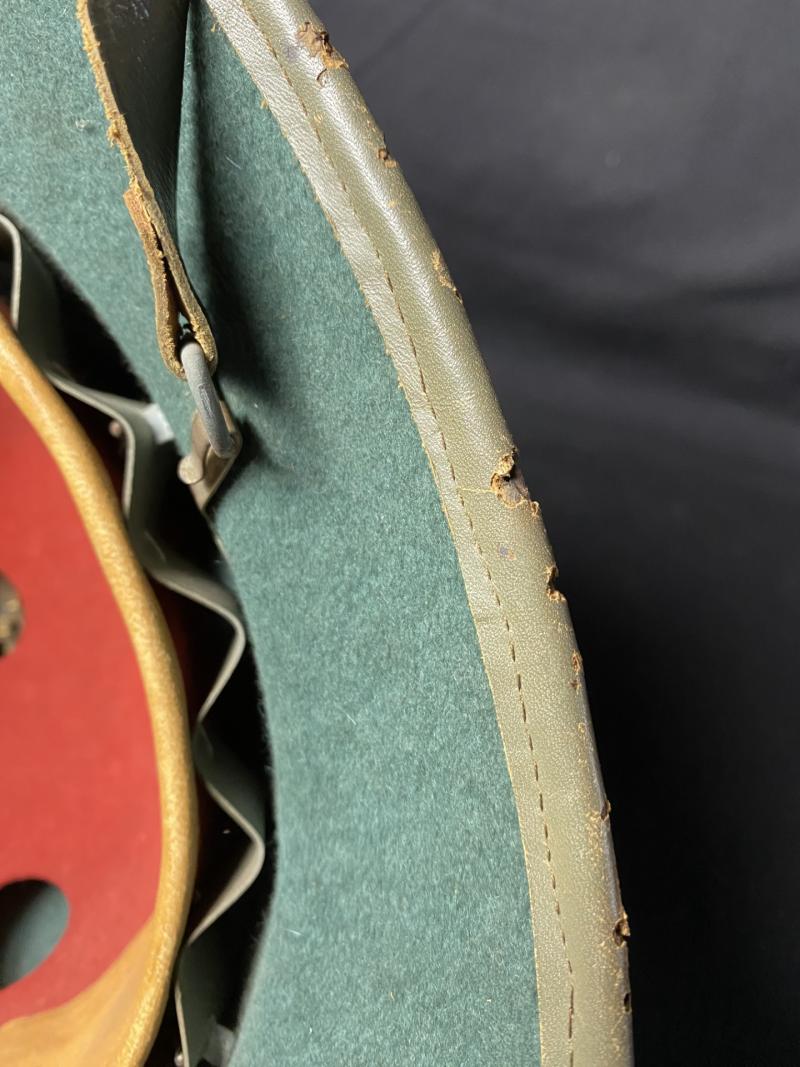WW2 GERMAN TROPICAL PITH HELMET (1942)
This is a WW2 German Tropical pith helmet which is covered in olive drab felt the top centre of the crown has a raised removable felt covered circular alloy dome with three semi-circular cut-out ventilation holes. The helmet also has a set of goggles fitted to it which can be removed, the helmet has two stamped aluminium shields with a National eagle to the left side and a national tri-colour shield to the right side. The bottom edge of the visor brim is lined in teal green felt and the interior crown is lined in red felt. The edge of the helmet does have some wear to it. The interior of the helmet has a wide, light tan leather sweatband which is secure in place by six small extended prongs with corresponding metal cotter retaining pins. dated '1942 and size marked 54. The helmet comes complete with a gray/green leather chinstrap with sliding magnetic sheet metal length adjustment buckle, a retaining clip and a quick release hook.
In late 1940, with the impending German entrance into the North African campaign, tropical uniforms, headgear and equipment were quickly developed and issued in time for DAK, Deutsches Afrika Korps, (German Africa Corps), personnels arrival in Tripoli in February 1941. One of the new headgear items introduced was the tropical pith helmet which was based on the design of the earlier Kriegsmarine pith helmet. On its introduction the pith helmet was constructed of a formed cork base with a cotton twill covering until a second pattern pith helmet was introduced with a formed cork base with a felt covering. The second pattern pith helmet followed the same basic design as the first pattern but was modified to ease production time and material costs. Wear of the pith helmets was extended to personnel serving in southern areas of continental Europe but the helmets proved ineffective and unpopular and manufacture was discontinued sometime in 1942.
Code: 5850

